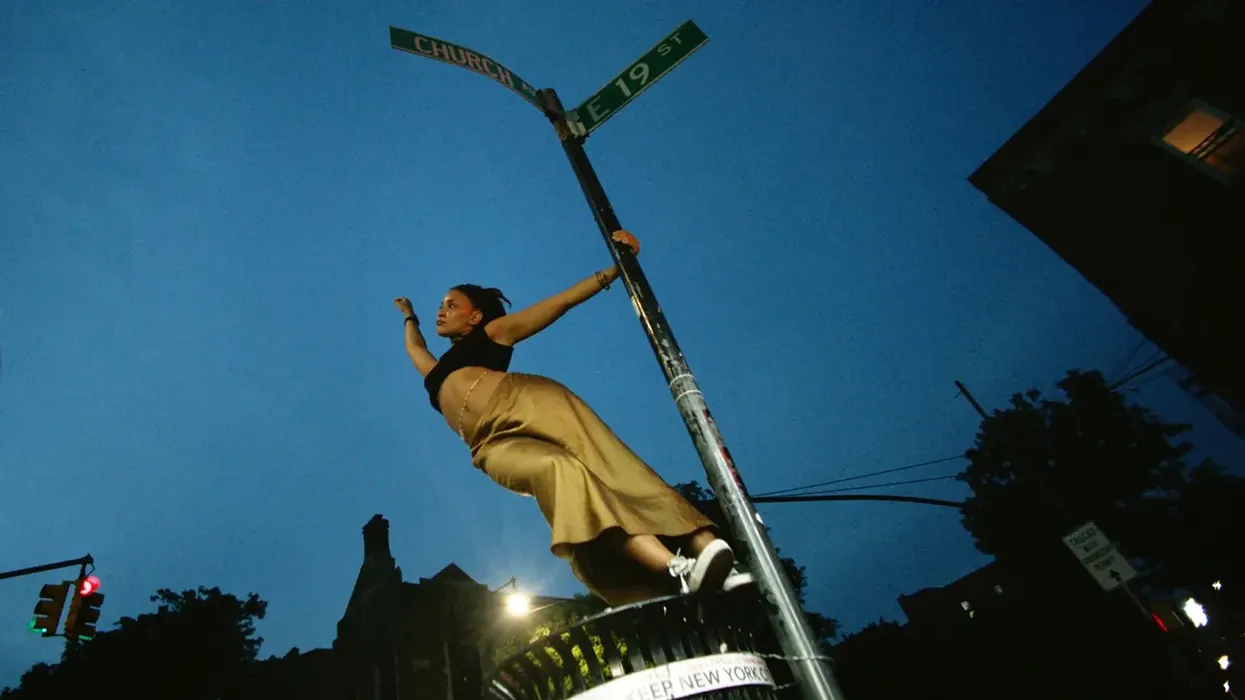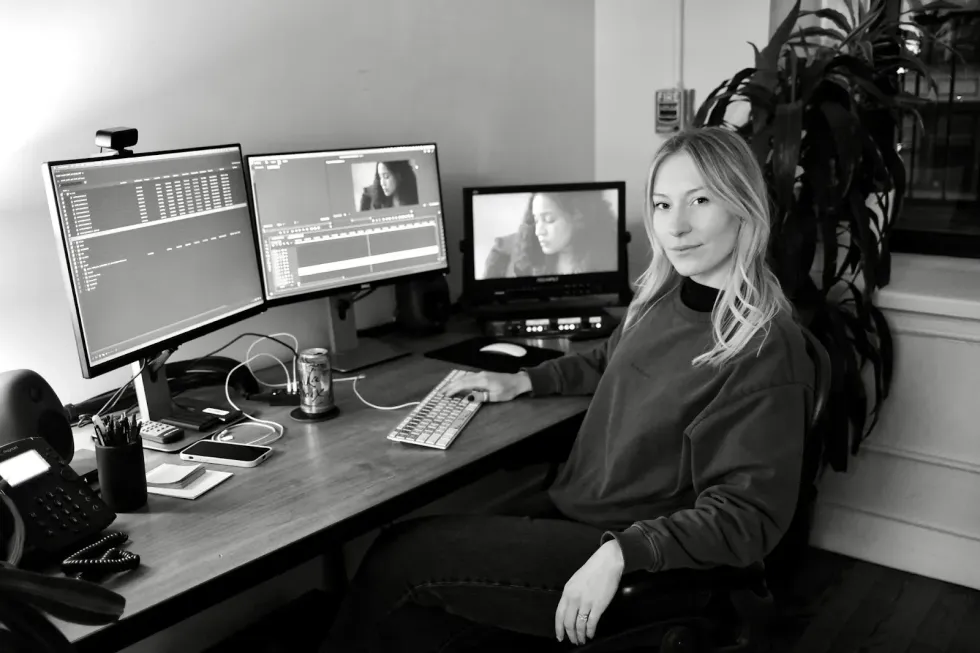Editing Sundance’s 'Tendaberry' with Premiere Pro and Frame.io
“Tendaberry,” which made its debut at Sundance Film Festival this year, follows the journey of 23-year-old Dakota whose boyfriend returns to Ukraine to care for his father after a heart attack.

This post was written by Kylee Pena and originally appeared on the Adobe Blog on February 20th, 2024.
Set in New York City, the film weaves poetic narration and captivating musical performances to illustrate Dakota’s journey as she navigates her newfound reality in the city she calls home.
We had the opportunity to speak with Stephania Dulowski about editing the film using Premiere Pro, specifically using the Essential Sound and Productions features. Notably, Premiere Pro’s ability to manage their vast library of footage, spanning two years of shooting and four different seasons, helped expedite the process.
In addition to Premiere Pro, Frame.io played a crucial role in the post-production process, allowing her and the director (Haley Elizabeth Anderson) to collaborate remotely when needed. Integrating comments from Frame.io directly into her timeline streamlined the editing and feedback process between Dulowski and Anderson.
Read on below for further insights into the film’s production.
How and where did you first learn to edit?
After graduating from the School of the Art Institute of Chicago in Fine Arts, I was curious about working in film and interned at an edit house. That’s where I met my good friend to this day who was an assistant editor and trained me in her spare time. I spent the next few months obsessively watching tutorials (sometimes even while taking a bath!) and pestering everyone at the company for any edit related knowledge. Then I was hired as an assistant editor and later on moved to New York City to assist at Exile Edit, where I am currently represented commercially as an editor.
How do you begin a project/set up your workspace?
Any time I start a new edit, my first task is to familiarize myself with the project by reading any scripts, treatments, pre-production books or supplemental assets to get an understanding of the story and what we are achieving with the footage. I work off a Premiere Pro template with my preferred workspace that mimics the file structure on the finder level. On “Tendaberry”, I had an incredible assistant, Jasmine Cannon, who is so well organized. I’m thankful to have had her help on this film.
Tell us about a favorite scene or moment from this project and why it stands out to you.
“Tendaberry” is my first feature film that I’ve edited. I was surprised to have favorite scenes when I first started editing the film but then have them completely changed by picture lock. If I had to choose the most satisfying scene to edit, it would be our 8.5 minute end sequence — it’s filled with mixed formats, poetry backed by a beautiful song, and it was just entirely pleasing to edit. It’s the ending of the film, and we saved editing it for last which was very cathartic.
What were some specific post-production challenges you faced that were unique to your project? How did you go about solving them?
“Tendaberry” was shot across four seasons over two years featuring a diverse range of formats, including DV, VHS, 16mm film, photographs, digital footage, and so on. It was challenging at times to handle the ingestion of our extensive library of footage but Premiere Pro's capability to handle mixed formats and the Productions feature expedited this process.
What Adobe tools did you use on this project and why did you originally choose them?
I used Premiere Pro to edit “Tendaberry” and Frame.io to receive comments on dailies, rough cuts and to share assets between my assistant editor, producers and me. Essential Sound was my most often used tool to eq the audio in the film, as well as the crop effect. The film contains a lot of mixed formats, so I was constantly adjusting the size and what’s shown in the frame.
Do you use Frame.io as part of your workflow? If so, how do you use it?
Frame.io was integral to the post process. Although the director and I mainly worked together in person, we were able to work remotely sometimes via Frame.io. We uploaded all our dailies to the platform, and Haley was able to review and leave notes on clips that we could reference at any point in the edit. Once we had rough cuts that were floating around, we received collective feedback on the postings. Ingesting the comments from Frame.io directly into my timeline streamlined the notes process. It's so much quicker than flipping tabs through the different programs — the notes are just markers in your timeline!
If you could share one tip about Premiere Pro, what would it be?
My tip is to always have your keyboard shortcuts down! The littlest shortcuts can help speed up the process of editing so you think less about how to do something, and you just do it.
Who is your creative inspiration and why?
On “Tendaberry”, each season has a different tone. Therefore, we referenced different films for each section. The references spanned from “L' enfant,” “Rosetta,” “Birth,” “Fish Tank” and “The Dekalog to The Mirror.” We also had a playlist of 120 songs as reference and inspiration so Haley and I would screen dailies listening to it.
What’s the toughest thing you’ve had to face in your career and how did you overcome it? What advice do you have for aspiring filmmakers or content creators?
Burnout is a pretty tough one to face. You need to hustle sometimes to spike your career; that means taking on more than you can handle, but this isn’t sustainable. I learned a lot by saying yes probably too many times when I was just starting out. These days I’m more selective and precious of my time. Plus now I know, even a project that may seem straightforward, could snowball into a complex and time consuming endeavor. Never underestimate a project!
Share a photo of where you work. What’s your favorite thing about your workspace and why?
My bevs are my favorite thing about my workspace. I need lots of different beverages while I work to keep me focused!

This post was written by Kylee Pena and originally appeared on the Adobe Blog on February 20th, 2024.
- The Best Advice from This Year's Sundance Filmmakers ›
- How the Filmmakers Behind Sundance Hit 'Tangerine' Shot on an iPhone & Got Cinematic Results ›
- How 'Bad Press' Filmmakers Captured the Blueprint for a Revolution ›











